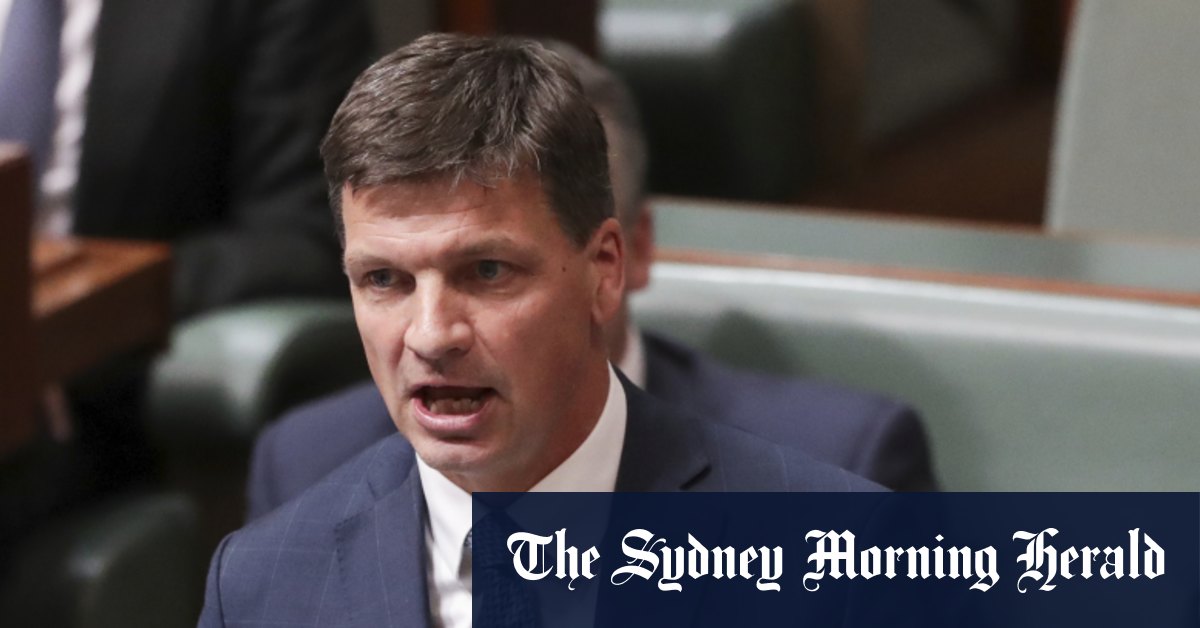Angus Taylor’s gas plan deepens policy uncertainty

The federal government this week laid out an energy policy it claims will satisfy the twin goals of driving economic recovery from COVID-19 and reducing Australia’s emissions.
On the one hand, the plan promised a “gas-fired recovery” based on new gas fields, pipelines and a conditional pledge to build a new gas-fired electricity plant next year in the Hunter Valley. On the other, it announced new funding of $1.9 billion over 10 years for new low-emissions energy technologies, including carbon capture and storage, mostly through the Australian Renewable Energy Agency.
The Coalition government has floated a slew of similar climate and energy strategies over the past seven years, from Clean Coal to Direct Action to the Energy Security Guarantee to the Climate Solutions Fund, but has a poor record of following through. It is also concerning that the latest energy policies are not underpinned by a specific long-term zero emissions target. Energy Minister Angus Taylor this week repeated his disputed claim Australia is on track to meet its weak target of a 26 per cent cut by 2030 under the Paris climate treaty. Unlike the states, the federal government has not set a formal net zero by 2050 target but it has signed up to the Paris Agreement, which commits it to meeting net zero in the second half of the century.
Australia’s lack of hard targets is a failure of climate leadership at a time when the wildfires driven by record temperatures are burning out huge swathes of the US West Coast. The European Union this week increased its 2030 emissions reduction target to 55 per cent from 40 per cent. The lack of a target after 2030 is also an obstacle to investment in gas pipelines or a gas-fuelled manufacturing boom or gas-fired power plants. Changes in climate policy will be fundamental to which projects stack up. Mr Taylor should start by modelling the impact of his gas plan on long-term emissions.
While he speaks of a gas-fired recovery, Mr Taylor’s plan will make only a modest contribution in the near term because it will take a decade to come to fruition. The only short-term stimulus is a conditional pledge to build a gas plant as a back-up for the closure of AGL’s Liddell power station in 2023. Mr Taylor says he wants the private sector to “step up” and commit to build the plant by next April but if it does not, the federal government or perhaps its wholly owned power company Snowy Hydro, will step in.
Yet this pledge will only add to the sense of market uncertainty because it sets a bad precedent for arbitrary federal intervention.
Experts say the new gas plant is not needed to keep the lights on. The Australian Energy Market Operator, the official forecaster, said last month that NSW has already prepared for the closure of Liddell which was announced seven years ago and the state’s grid has enough generation capacity to meet reliability standards until 2029-30.
Mr Taylor agrees but says he wants to build the plant to break the oligopoly of the big three power generation companies — AGL, Origin and Energy Australia. It is strange that a Liberal Party minister might solve a problem by renationalising parts of the energy sector. Mr Taylor’s role should be setting broad policy goals and a market structure, not running his own shop.
Mr Taylor’s announcement of further funding for low emissions technologies on the other hand is welcome. Frank Jotzo, director of the Centre for Climate and Energy Policy at the Australian National University, welcomes the refunding of the Australian Renewable Energy Agency, which has funnelled $1.6 billion into solar, wind and other clean energy technology since 2012. But he argues the $1.4 billion of baseline funding amounts to a cut on an annual basis and should be increased.
Mr Taylor wants to broaden ARENA’s investment mandate, allowing it to invest in untested technologies, including carbon capture and storage, because he says ARENA’s support is no longer needed for renewables which can now stand on their own feet.
That makes sense but Mr Taylor must guarantee he will not add to the $1.3 billion already wasted on projects to capture carbon from coal-fired power stations. The technology will never be competitive in electricity generation against renewables and storage.
Mr Taylor should direct the funding to low or zero emissions technologies in other areas where there is currently no alternative to burning coal such as the manufacture of steel, fertiliser and cement.
He should also commit to giving industry an incentive to adopt these new technologies as they become available either by a carbon price or regulation.
The Coalition has spent seven years without a long-term climate policy. The latest announcements show it still has a long way to go before it is taken seriously.
Note from the Editor
The Herald editor Lisa Davies writes a weekly newsletter exclusively for subscribers. To have it delivered to your inbox, please sign up here.
Since the Herald was first published in 1831, the editorial team has believed it important to express a considered view on the issues of the day for readers, always putting the public interest first. Elsewhere, we strive to cover a diversity of views without endorsing any of them.
Most Viewed in Business
Source: Thanks smh.com